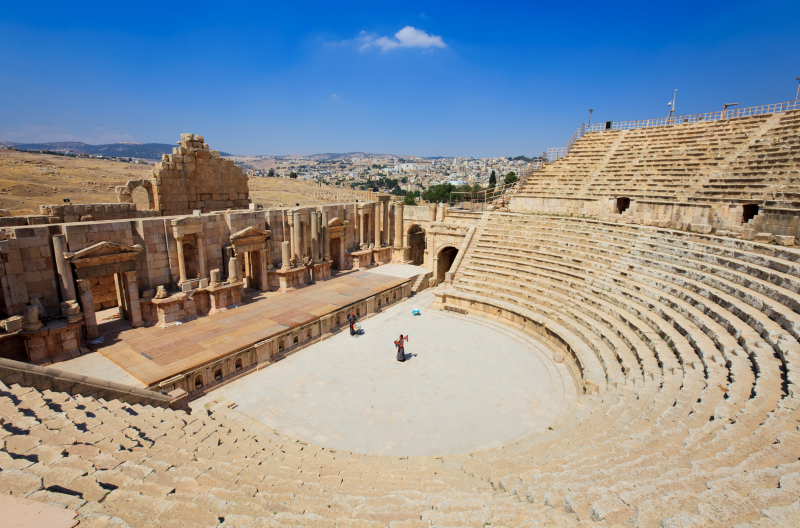The ancient city of Jerash is one of the most popular attractions in Jordan behind Petra. It is considered one of the largest and most well preserved sites of Roman architecture in the world outside of Italy and its history goes back more than 6,500 years. Located north of the country’s capital, Amman, visitors marvel at the stunning colonnaded streets, public squares and hilltop temples.
History of Jerash

The earliest known inhabitants of this area named the village, Garshu. The name was then turned into Gerasa and later, Jerash. Jerash began to grow from a small village to a thriving city during the 4th century BC under the rule of Alexander the Great. It was conquered by General Pompey in 63 BC and under Roman rule, it was named one of the great Roman cities of the Decapolis League.
During its prime, Jerash may have had a population close to 20,000. But during the 3rd century, the city started to decline. It was later invaded by the Persians and then the Muslims and suffered earthquakes, causing damage to the city. Soon, it was abandoned.

The ancient city of Jerash was hidden for centuries, buried under the sand. It was discovered in 1806 by a German traveler, Ulrich Jasper Seezten, who recognized part of the ruins. It has been excavated since 1925 and projects still continue today.
Visiting Jerash
Jerash’s location may be the reason why it was a such a thriving city at one time and why it was preserved so well. At an altitude of 500 meters, the city has a year-round supply of water and a temperate climate. The modern city of Jerash is built next to the ancient city.
Visitors will have the opportunity to walk through the ancient city and observe the well-preserved colonnaded streets, the theaters, the public baths and fountains.

The ancient city of Jerash can be accessed through the Jerash Vistor’s Center at the South Gate of the site. The center offers free maps and a souvenir shop.
